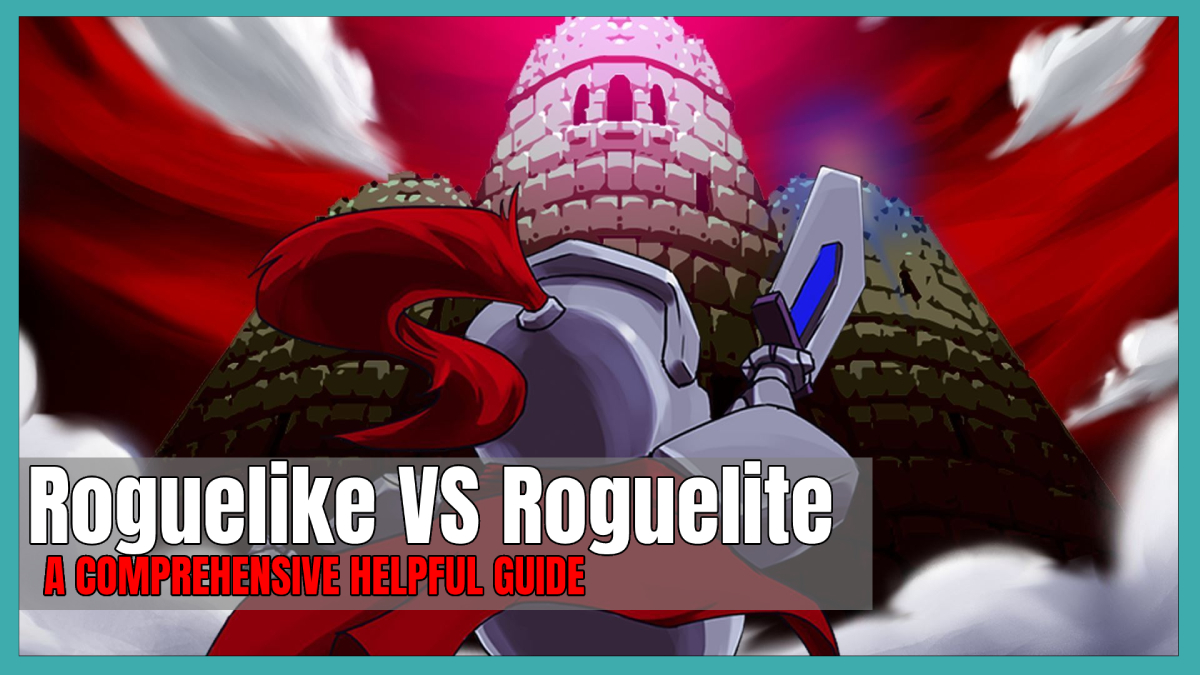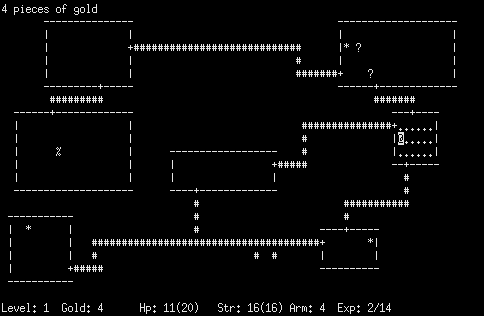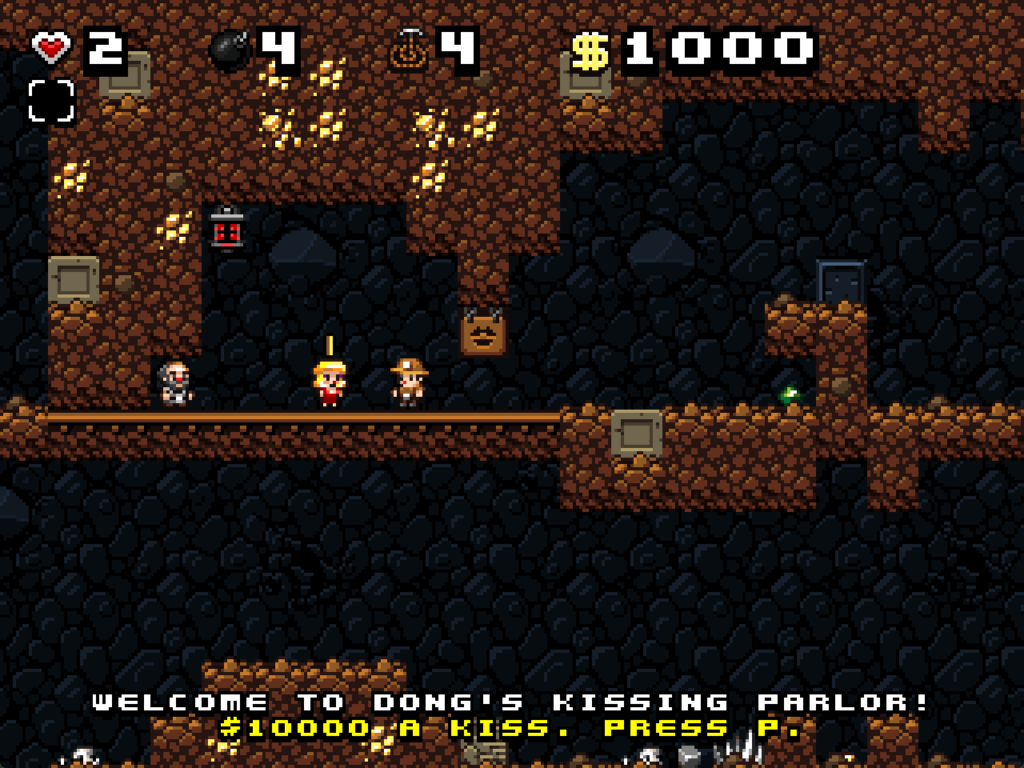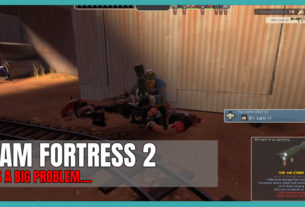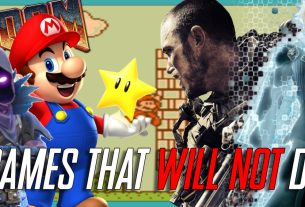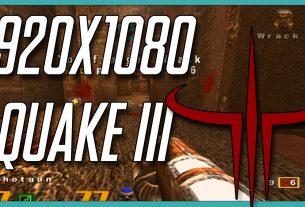Roguelike vs Roguelite, both sound pretty similar but have different gameplay designs. You have probably seen them a lot and know they are fun. But when you hear two groups saying Roguelikes and Roguelites are different. You begin to question how they are different. Are they different or are the genre names the only difference?
My background for Roguelikes and Roguelites is that I have played both for around 10 years, starting with NetHack 3.4.3 as my First Roguelike and Spelunky Classic as my first Roguelite.
In this article, I will be writing about the history of the two genres and how they compare/contrast. Will one be better than the other?
Not really, it’s all about what you think.
A Brief History of Roguelike
The Roguelike genre may be older than you think. Rogue or Rogue: Exploring the Dungeons of Doom was originally released back in 1980 on the Unix-based minicomputer systems at the University of California. Rogue was developed by two students from the University, Michael Toy, and Glenn Wichman. Ken Arnold would later join in and contribute to Rogue’s development. Commercial ports for the game would later come with the developers join under a company named A.I. Design. A.I. Design’s version of Rogue would later be published by Epyx.
Rogue would later inspire other game designers to make their own versions of Rogue. This would become the genre we know today as “Roguelike” (hence, like Rogue). One of the first Roguelikes is called “Hack”. While Rogue isn’t exactly the first Roguelike because it is Rogue. Hack started out as a game made from scratch. The developers originally came up to talk with the developers of Rogue about having the source code of Rogue and possibly updating and maintaining it. The developers of Rogue said no, leading them to make their own game inspired by Rogue called Hack.
This would mark a turning point for the genre in which we know today. From the 80s to the 90s, developers would take inspiration to create their own Roguelikes or continue off of the originals since some of them are open source. Some of these Roguelikes such as UnReal World used the roguelike design and took it to the far north of Iron Age Finland and currently the game holds the world record for being the first Open World Wilderness Survival game. NetHack while being one of the first Roguelikes I played continued from a hack by being developed by both the dev team and the community. From 1987 to now, NetHack periodically receives updates to the game by adding new features, content, and optimizations for newer operating systems.
The majority of roguelikes are free so others can easily access them through Bulletin Board Systems (this was before the age of the internet). This allowed more interest in playing these types of games while some may contain the source code and contribute to the game’s development life span. With Bulletin Board Systems (BBS) and the rise of Internet Relay Chat (IRC). This allowed other roguelike gamers and developers to form communities as well as inspire other developers to take note of the genre.
Rise of the Roguelites
Roguelites are fairly new and more mainstream/popular compared to their older brother Roguelike. While for many players may play these games and probably may have not played a Roguelike or were too scared because of Roguelike’s complex nature in terms of the design and gameplay. Whilst there are a lot of Roguelites that are placed within different genres of games like card games, shooters, Open world RPGs, MMOs, and now I have seen one for an RTS called Rogue Command which makes me think its StarCraft meets Age of Empires III.
To me, it’s quite odd that a lot of Roguelites haven’t stemmed from the Roguelike genre in terms of consistent gameplay design and more of implementing game mechanics from Rogue into other games like Procedural Generation and Permadeath. As I play both genres, I don’t choose one over the other.
While this is practically an opinion and maybe others may disagree. I felt like it may need to be in this particular chapter in the Roguelike vs Roguelite article.
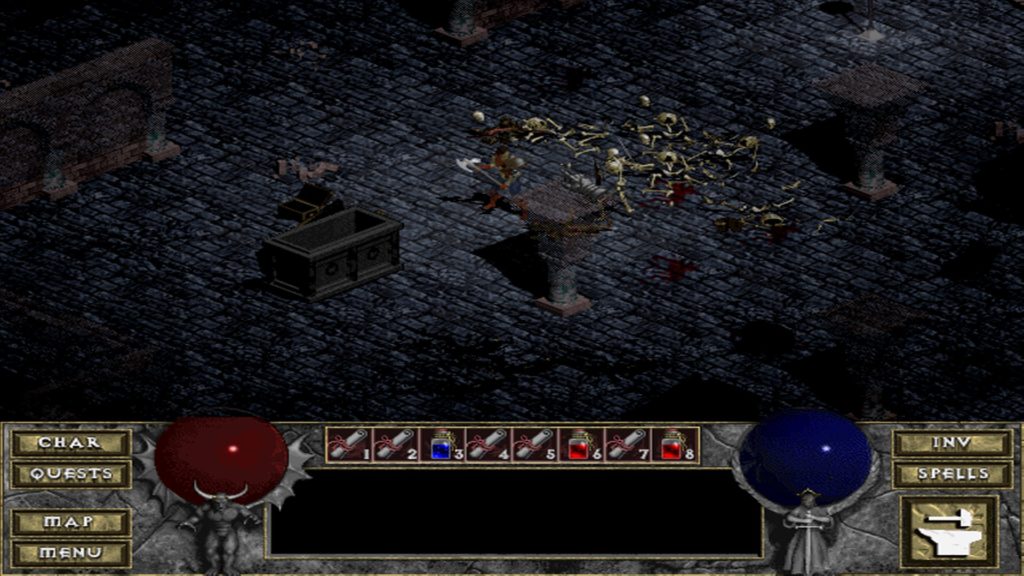
One game I believe is the prototype of the Roguelite genre is Diablo 1 and 2. While Diablo defined the Action RPG genre. It originally was going to be a turn-based RPG that took a lot of inspiration and influence from Roguelikes such as Rogue, NetHack, Moria, and Angband.
However, even if you are a Diablo fan reading this and might shout in disagreement. I would recommend watching this video as the guy who has explained this is the Lead Programmer and Designer of Diablo 1 and 2, “David Brevik”.
Diablo could classify as a roguelike
When playing Diablo 1 as it is currently available on Good Old Games. The movement may feel like you are moving tile by tile just like a Roguelike but in an isometric point of view.
While there is more, Diablo featured procedurally generated dungeon layouts and all items that can be found in chests or looted by enemies was random and had random stats making the experience different for each play-through. Diablo did allow you to create a newly generated seed of dungeons which would respawn enemies so you could progress more. Even in multiplayer as you couldn’t save the dungeon layout progress and when you die, you can respawn but lose all your items in inventory but keep the progression of spells and items you have equipped. Like many other Roguelites, you can continue your progression slowly after each death.
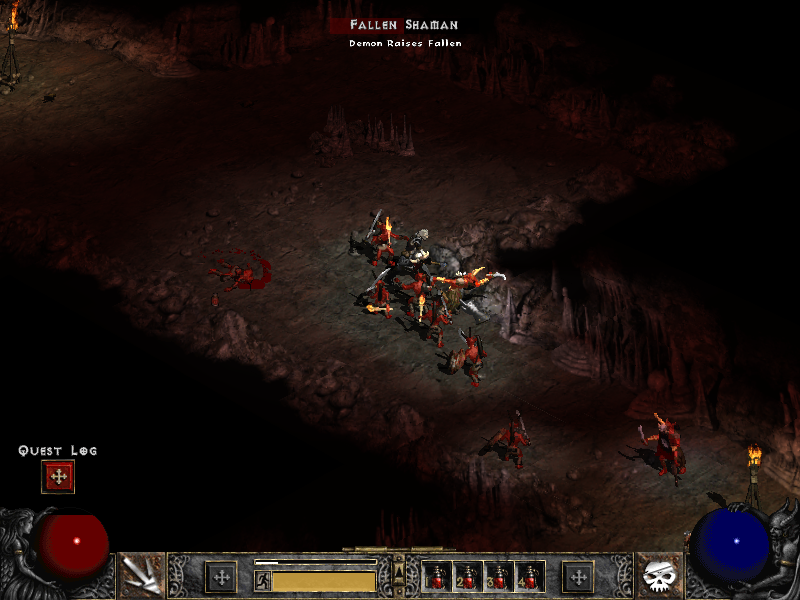
Diablo 2 was the first in the Diablo franchise to properly add permadeath to its gameplay design by adding another difficulty game mode called Hardcore which would make the game even more difficult but can be a challenge if you want to beat the game at that difficulty.
The FIRST Roguelite
It took me awhile to find the very first Roguelite since there are so many. I decided to go on r/Roguelite for help on this topic and they came up with the conclusion that Spelunky is the very first Roguelite.
I do find it quite funny as I made a Review on both the original and HD Remake of the game Spelunky. You can read my REVIEW OF SPELUNKY here.
While it is pretty cool that the first Roguelite I have played happens to be the very first Roguelite. The only things I know it borrows from Roguelikes are mainly Procedurally generated levels and Permadeath. Spelunky does offer destructible terrain to these levels making it so that there are other ways to finish the level.
As for progression beyond dying. You will occasionally be awarded new characters and passageways to skip levels by completing a certain task from an NPC known as the Tunnel Man. However, even if you do die. The task won’t restart and will continue to progress until you finish it.
As with many Roguelites that feature a way to progress further. This adds other things to the mix with the difficulty curve. For Roguelikes, the difficulty curve stays the same or if not it increases in difficulty. Roguelites on the other hand have ways to make progression continue even if you die. This slowly decreases the difficulty curve. Not every Roguelite is the same as many have their own progression formulas like upgrading stats, keeping currency from death and others that make you feel like you are progressing and getting close to winning the game from endless playthroughs.
Embrace Tradition
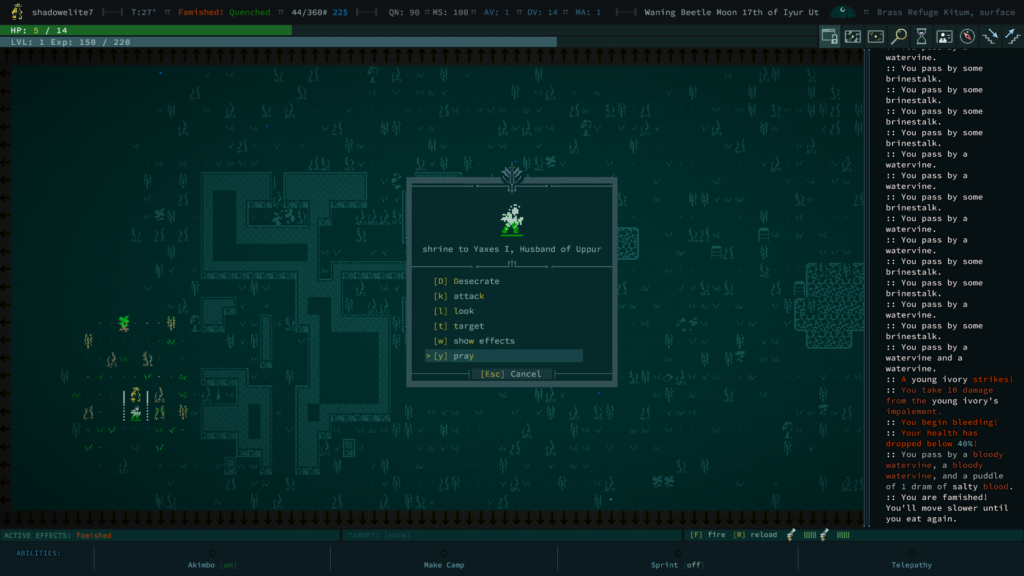
With Roguelites gaining massive popularity among fans who enjoy them. There’s another group that has been playing Roguelikes and developing them for years. While not reaching that massive success or popularity. There are some that have gathered a niche or some of them have become cult classics.
In the early 2010s, there have been a lot of classic game designs being used in many new games and bringing back genres of old or becoming new subgenres. While there are a lot of newer Roguelikes that come out. The majority of them are in Early Access and have been in the development process for more than a decade. You can think of these Roguelikes as either the AAA Roguelike in the genre but they have another name which is “Major Roguelike”. Some of these new Roguelikes such as Caves of Qud and Cogmind have around 1-2 developers. They have been adding new features, content, and squashing those grid bugs that you may have encountered in the olden days of NetHack.
Dawn of the Traditional Roguelikes
While I have only mentioned two Roguelikes that have almost reached 10 years in their development cycle. I have seen a lot more in recent years, some in early access and some that are already out of early access.
There are so many Roguelikes that have their own spin on the genre. It’s not just fantasy-themed Roguelikes anymore. While there are still some that are in a fantasy setting. There have been quite a lot that have taken the genre in new-themed directions. You have Armoured Commander that takes place in World War one and two. There is Jupiter Hell which is a spiritual successor to Doom the Roguelike and made by the same developer.
There is Door in the Woods which is an open-world survival game with horror elements from HP Lovecraft. Even some games like Infra Arcana have used the HP Lovecraft setting while taking influence from a classic Monolith shooter called Blood. Cataclysm Dark Days Ahead (CDDA) brings the Roguelike genre into the post-apocalyptic survival theme by letting you figure out how to survive the harsh world from zombies or other creatures.
Another Roguelike I have tried on and off is Tales of Maj’eyal, its basically like a turn-based Diablo-style game and it only took me a few minutes to realize this. There’s a lot of Roguelikes to choose from and I haven’t played all of them but have played a few I have mentioned.
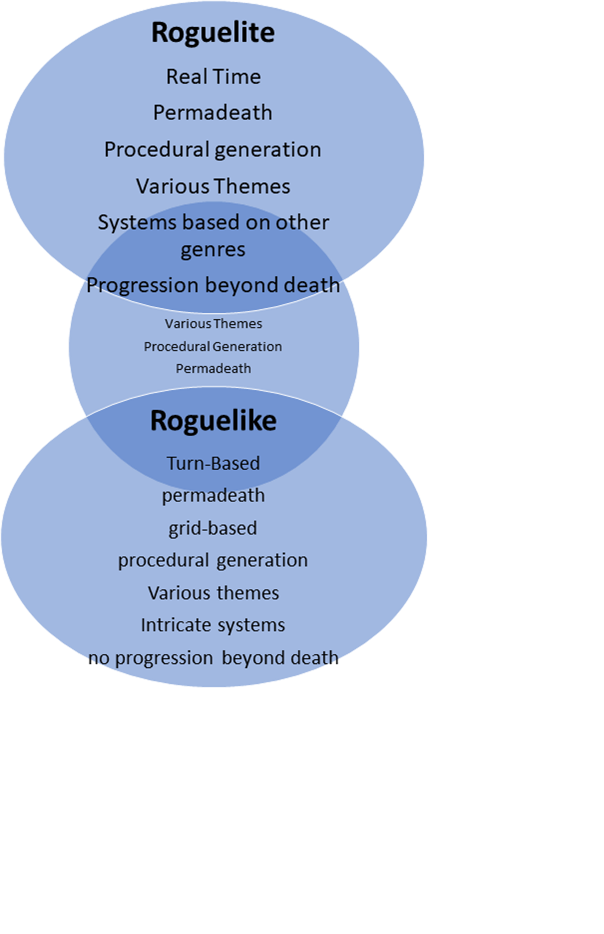
My History with Rougelikes and Roguelites
As I mentioned in the introduction, I have played both Roguelikes and Roguelites for around 10 years. How did I get into them? How did I discover them?
It was either the year 2012-2013. I was just getting into middle school. The computers we had were just Lenovo ThinkPad ChromeOS-based laptops. I grew up using Windows XP, Vista, and 7 (never used 8 or 8.1). I knew ChromeOS wasn’t the same but I knew it would’ve been a great challenge to find a game to play for long periods of time like I have done for my previous childhood games, Age of Empires one and two.
I discovered Roguelikes as a weird accident. I felt like it would be interesting to search for a hacking simulator on the Chrome Web Store in a school. The first thing that pulled up was NetHack. While looking at it, It looked like what you may see from a BIOS or Command Prompt when using windows. However, it wasn’t a hacking simulator but the game itself was rather interesting to me. I had to learn by playing the game and figured out that “Shift + ?” was a command to see all the commands to play. While the think pad didn’t have a number pad. I stuck with the arrow keys instead.
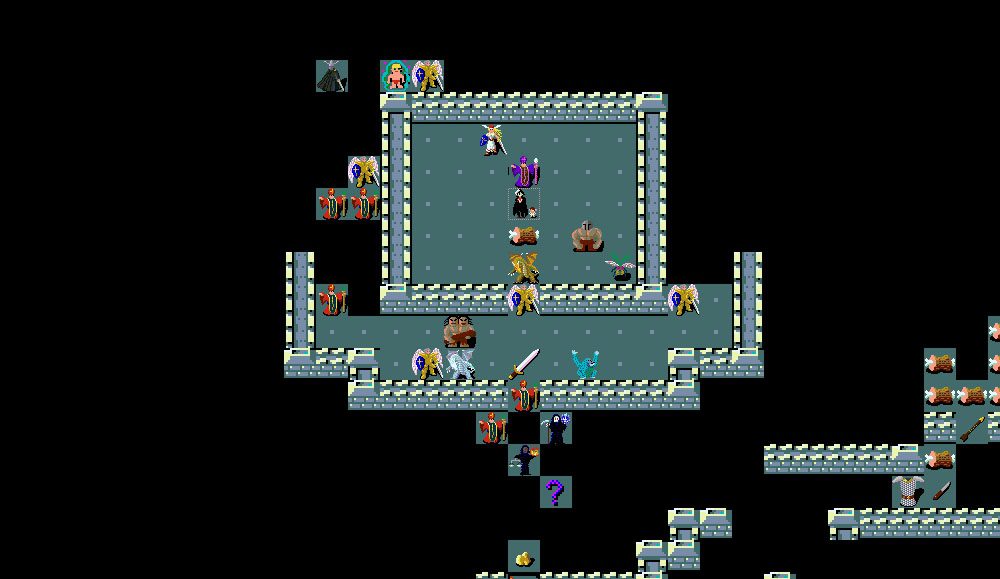
NetHack felt really appealing to me. I never played a game that used ASCII graphics before and it occurred to my mind from remembering the stories my dad will tell me in his adventures playing Dungeons & Dragons using pencil and paper. You had to use your mind to imagine what the game world would look like to you. While other classmates would ask me what programming language I was writing in. I would say its not a language. I am playing as a healer who has drunk an unnamed potion that gave me strength to fight a kobold in hand-to-hand combat. While my classmates were confused. I was having my own kind of fun. Even if you couldn’t see it visually. I did discover the graphical tile set mode which did look cool. I ended up playing a little bit of both modes, just challenging myself as I go.
As for Spelunky, there weren’t a lot of good platformers on the chrome web store other than Fancy Pants Adventures which is what I knew of at the time. Once I saw a lot of classmates and some friends playing this other platformer game. I asked them what it was, and they said it was called Spelunky. I ended up playing a lot of Spelunky.
I’ve never finished Spelunky and a few years later I did get the HD Remake. I did end up having only one win run in NetHack and out of the many of deaths for a span of 3 years of playing the game. Sometimes I do come back to playing both and just recently I saw a new update on NetHack and I think I will play some more.
Roguelike vs Roguelite Developer Q&A
I thought it would be interesting to see what Developers of these types of games think about the genre of games they contribute to.
If you are a Developer of a Roguelike or Roguelite I have not reached out to. You can mention me on Twitter @SHADOWELITE7 or join our discord to answer these questions too.
For Roguelike Developer
- What was the first Roguelike and Roguelite you played?
- What was the most challenging part when making “Roguelike Game”?
- Do you have any Roguelites you like and want to recommend?
- What would you do if you made a Roguelite and would you be interested?
For Roguelite Developer
- What was the first Roguelike and Roguelite you played?
- What was the most challenging part when making “Roguelite Game”?
- Do you have any Roguelikes you like and want to recommend?
- What would you do if you made a Roguelike and would you be interested?
Roguelike Developer: Josh “Kyzrati” Ge
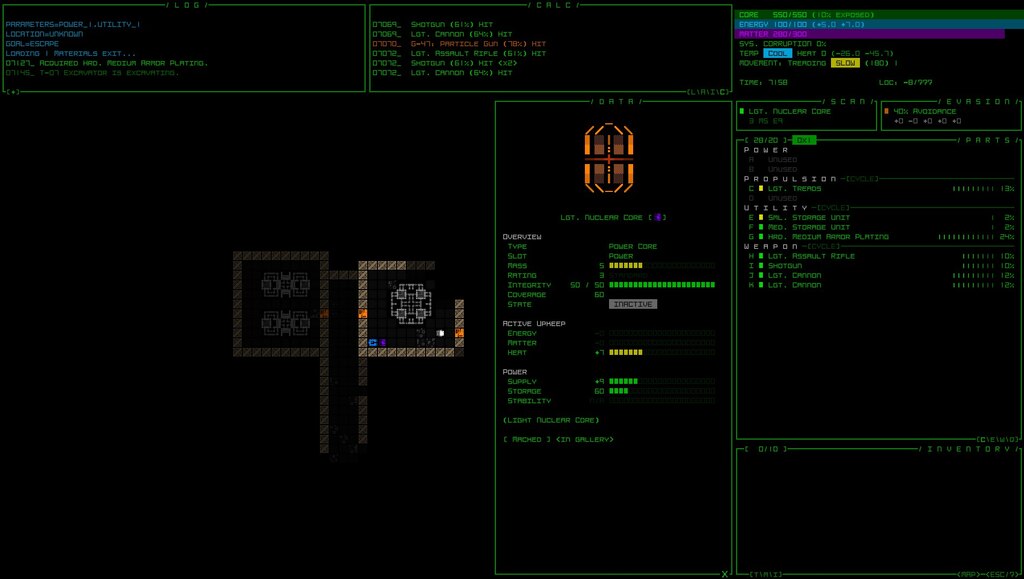
Kyzrati is a developer of one of my favorite Roguelikes of all time which is Cogmind.
In Cogmind you are playing as a robot who has started out in what you could call a junk yard. There are other parts to equip yourself and you have to see how long you can survive against other robots connected to a hive mind of sorts. You can destroy other robots or the terrain (which can regenerate). Even destroying robots can allow you to take their parts and attach it to yourself. Allowing you to make crazy builds and from my experience. I tend to have higher power consumption even when using 3-4 power cores or even a few nuclear cores. While the game is currently in early access and I have not finished the game. Cogmind offers a lot of content to dive into and I think that’s worth it.
here’s what I gathered from the developer of Cogmind
I’ve played hundreds of roguelikes, but roguelites… almost none at all! So nothing to really recommend there, and it’s hard to say whether I’d be interested in making one, since so many games could qualify, but as long as it’s turn-based and involves procedural generation I’d probably be somewhat interested, for example continuing and greatly expanding my old XCOMRL project! The thing about what are generally considered “roguelites” these days is that they tend to be realtime games, which I’m not into as far as development goes.
The first roguelikes I played were actually a bunch of random lesser-known titles from the 2000s, none of which really stuck, just getting my feet wet, but then around 2011 I got sucked into DCSS (Dungeon Crawl Stone Soup) hard, which is what convinced me I wanted to try building something in this cool genre.
My first Roguelike Celebration talk from 2016 actually talks about that and how I got into it all:
As for the challenging parts of building Cogmind in the time since, I’d say it was probably the early years trying to solve the occasional technical issue beyond my capabilities, since I’m not really that knowledgeable of a programmer–I’m better with game design and logic, but building games can sometimes throw some really tough problems at you! I recall this one time before Cogmind’s first version was ever released when I had this serious random memory error that could crash the game, and no way to really track down a solution despite narrowing it own to a specific section of code. I posted a detailed description online looking for help, and fortunately someone who knew what they were doing took my data and figured out what was wrong, a low-level library-related memory issue I never would’ve been able to figure out on my own in a million years xD
It’s good to have knowledgeable and helpful people out there to fill one’s own gaps! So I also put a lot of effort into maintaining roguelike dev communities so that kind of help gets passed around freely and continues improving the genre.
Roguelike Developer: Zeno
Hi, answering your questions in the Roguelike vs Roguelite article
– My first roguelikes: Valhalla (aka Ragnarok), an Angband variant, ADOM.
– My first roguelite: Spelunky.
– I would like to recommend Unexplored, which is very close to a roguelike, just an action game; and Noita, which is quite an original game, with lots of roguelike complexity.
– There is a “shmup mode” in HyperRogue which probably should be called “action” or “roguelite” mode. I make games when I have ideas I would like to try, I have no ideas for new games at the moment, when I have one, it could be a roguelike or a roguelite, but hard to tell yet. I do not generally like the name “roguelite”, it sounds dismissive and is too similar to roguelike, while it is a completely different thing. Better to say “run-based” or “arcade”. I guess some people would call Bringris or Relative Hell “roguelike/roguelite” while they are in fact run-based/arcade games.
Some comments on the post:
– Some people say “roguelikes have no metaprogression, roguelites have metaprogression” but that is basically a thing that people who have never played roguelikes say. There are roguelikes with metaprogression (Sproggiwood, One Way Heroics, Tales of Maj’Eyal has something, and even NetHack has bone files) and roguelites with no metaprogression. It is more of a modern invention that can be applied to both (and roguelites are more likely to have it because they are usually newer). Permadeath in roguelites and roguelikes are very different, but in a very different way. Roguelite permadeath is usually taken from arcade games (that is the central thing about them; if you let save at will, you would get a bad game; short runs). Roguelike parmeadeath is usually similar to other turn-based strategy games, like Civilization or X-COM (usually an optional feature, since they make sense both ways; it is more how hardcore players like to play them; unfortunately contrary to Civ or X-COM roguelikes get no real marketing so you hear of them mostly from these hardcore players). (Technically “roguelite” started as “roguelike with metaprogression”, but then the word became the name used by roguelike fans to mean “games commonly called roguelikes”).
– Spelunky is “first roguelite” in the sense that it was the extremely popular and influential game that kickstarted the genre, but earlier games would qualify too, for example, ToeJam & Earl, or Triangle Wizard. (Generally the first influential game in the genre is usually not the same as the first game in the genre ever: there were roguelikes before Rogue, e.g. Beneath Apple Manor; FPS before DOOM, e.g. Wolfenstein 3D; and so on.) Diablo is more roguelike permadeath “if you want to be hardcore, you can play it permadeath and it will be fun” (it was actually intended to be played permadeath, but contrary to most commercial roguelikes, they somehow did not get the idea to make it an option on startup) than arcade/roguelite permadeath (“play this again and again in short runs”). (Unexplored and Noita are also closer to roguelikes in this sense, they have long runs, and Noita in fact would benefit from a permadeath option)
– I have written more on this in Permadeath considered harmful. Typical video games take 10–100 hours… | by Zeno Rogue | Medium
– Nice post in general!
Rouguelike vs Roguelite: Conclusion
Roguelikes and Roguelites, both genres that are very similar to each other yet very different by design. There is a lot to choose from and I had fun from both. Whether you are new, I think you should try both. If you are a seasoned veteran, maybe recommend a couple of games in your community.
- ⌨️Website https://techholler.com
- ⌨️TechHoller.com YouTube Channel – YouTubeChannel
- ⌨️TheSmango YouTube Gaming Channel – GamingYTChannel
- ⌨️Twitter https://twitter.com/thesmango
- ⌨️Live Streaming – https://twitch.tv/TheSmango
- ⌨️Discord – https://discord.gg/52etAD9
- ⌨️Trading Cards and More – AppalachiaTCG
